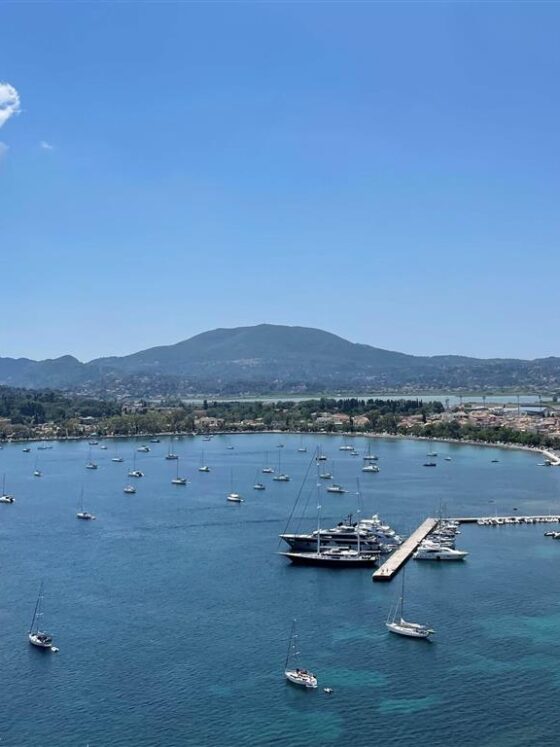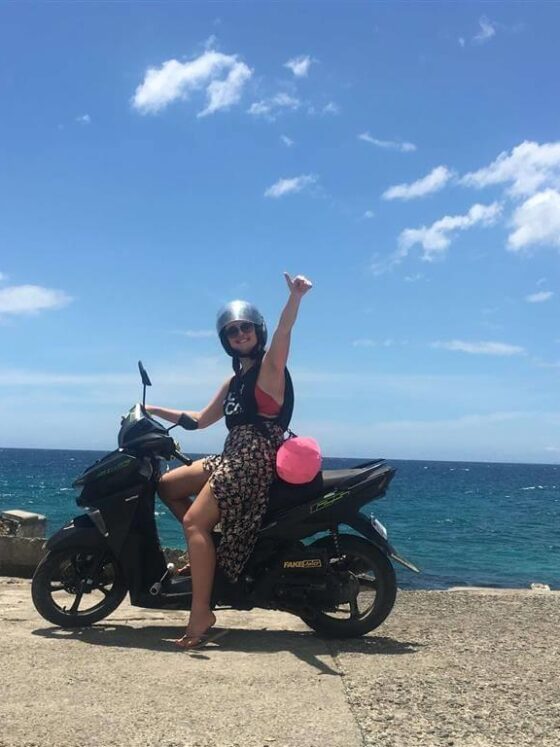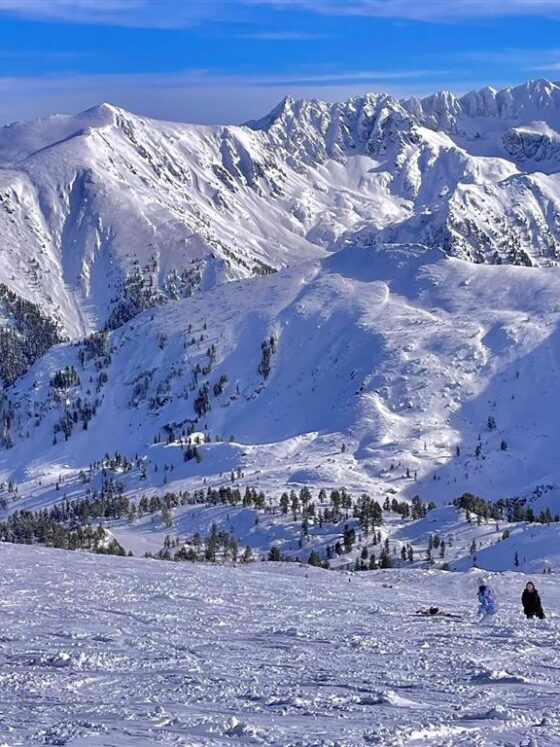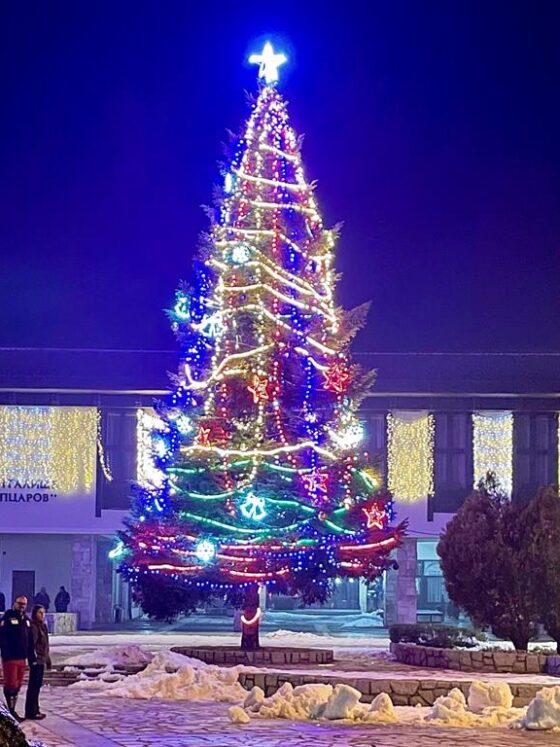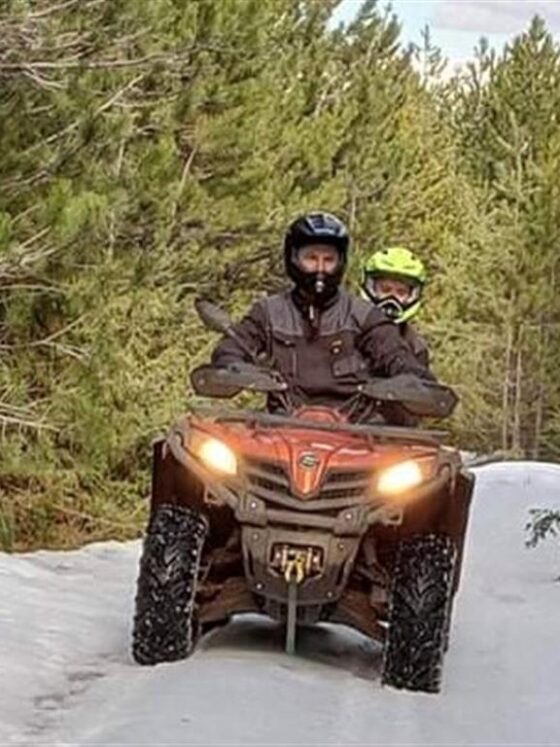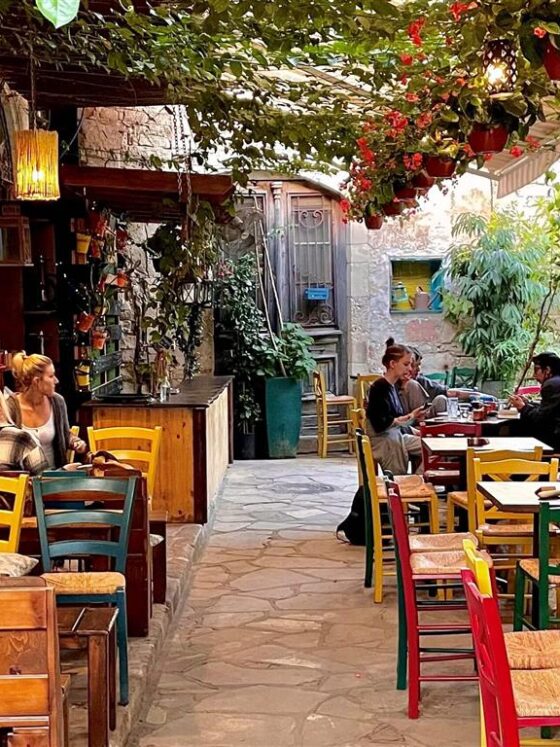A day trip to the UNESCO World Heritage Site at Butrint National Park is a fantastic day or half day trip to take in Albania. The park is most famous for its Venetian and Roman artifacts including its castle, basilica and amphitheatre amongst other things.
But there is much more to it than this, so let’s take a look at everything you need to know about a trip to Butrint National Park.
What is the Butrint National Park
Butrint is a UNESCO world heritage site and is one of the most visited attractions in Southern Albania.
Butrint National Park covers nearly 95 square kilometres. This includes the famous archaeological site as well as lakes, wetlands, open plains and islands.
There are over 1,200 different plants and animals within the park which reflects both the size and the diversity of this place.
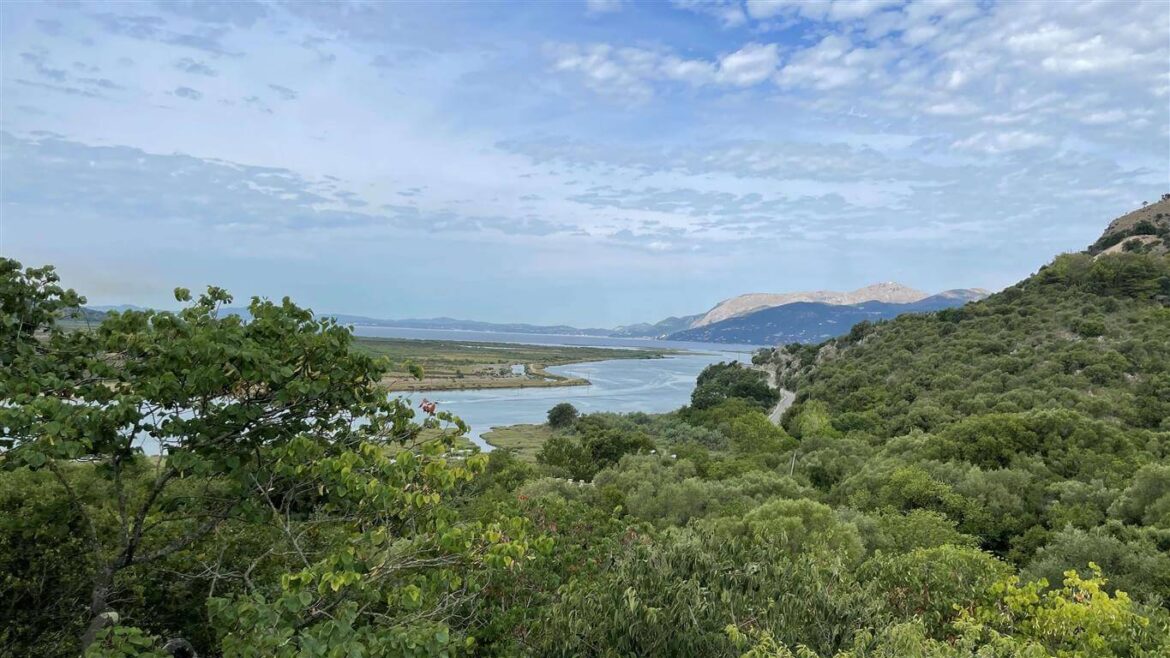
Butrint National Park is located 18 kilometres south of Sarande on the eastern part of the Strait of Corfu.
The most popular part of Butrint National Park is the archaeological site which contains the remains of a former Roman and Venetian town.
The town was of significance during the Roman period when Julius Caesar made it a Roman colony in the 5th century. It became a thriving, lavish town where Roman soldiers would be permitted to settle after certain battles as a reward for their services to the empire. It saw a decline in the middle ages after the Venetians abandoned the town.
Today you can still see many of the remnants of the town of Butrint thanks to the excavation and preservation efforts.
What to See at Butrint National Park
When you arrive and buy your ticket at Butrint National Park, you head inside the walls to the site of the former Roman town. Here you can follow the signs to each site and the helpful information boards will explain the significance of each archaeological discovery.
Here are a few of things you can expect to see inside Butrint National Park.
Sanctuary Of Asclepius
One of the first discoveries you will make is the sanctuary of Asclepius who was the Greek god of medicine and the son of Apollo.
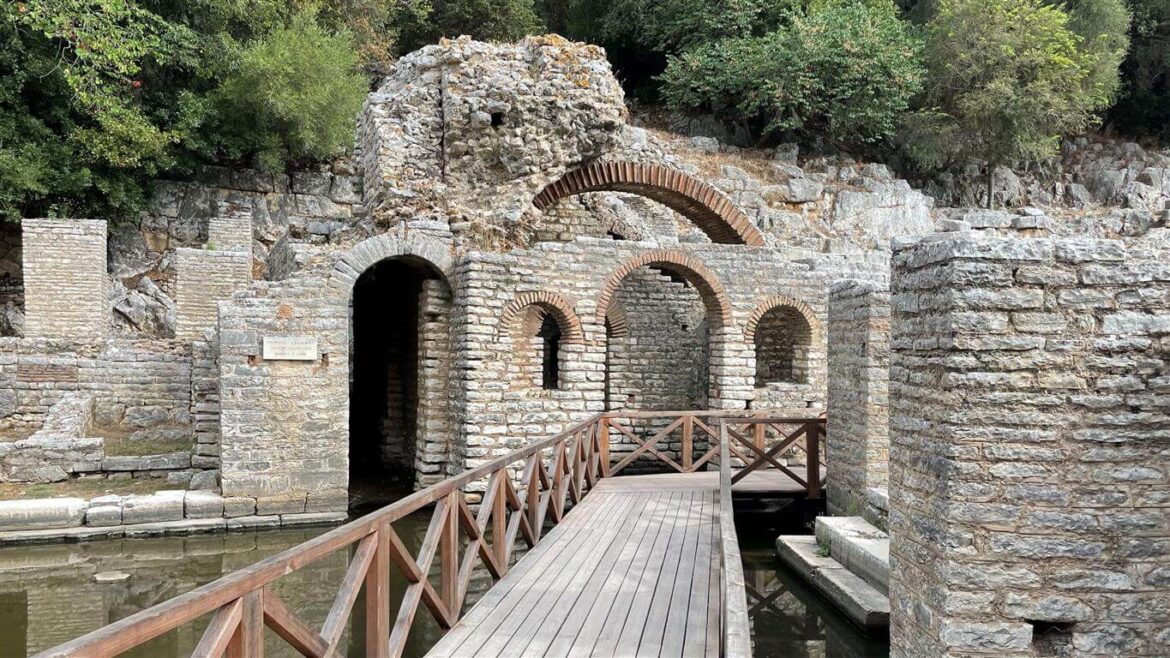
The Sanctuary was founded in the 4th century BC. Worshippers would seek healing from Asclepius by leaving symbolic objects and money at the Sanctuary in exchange for being healed by the Greek God and his priests.
The Roman Theatre
Next to the Sanctuary is one of the most impressive discoveries at Butrint, the Roman Theatre.
Origianlly, in around the 3rd century BC, the theatre would have used by the worshippers and the priests connected with the Sanctuary of Asclepius for religious ceremonies.
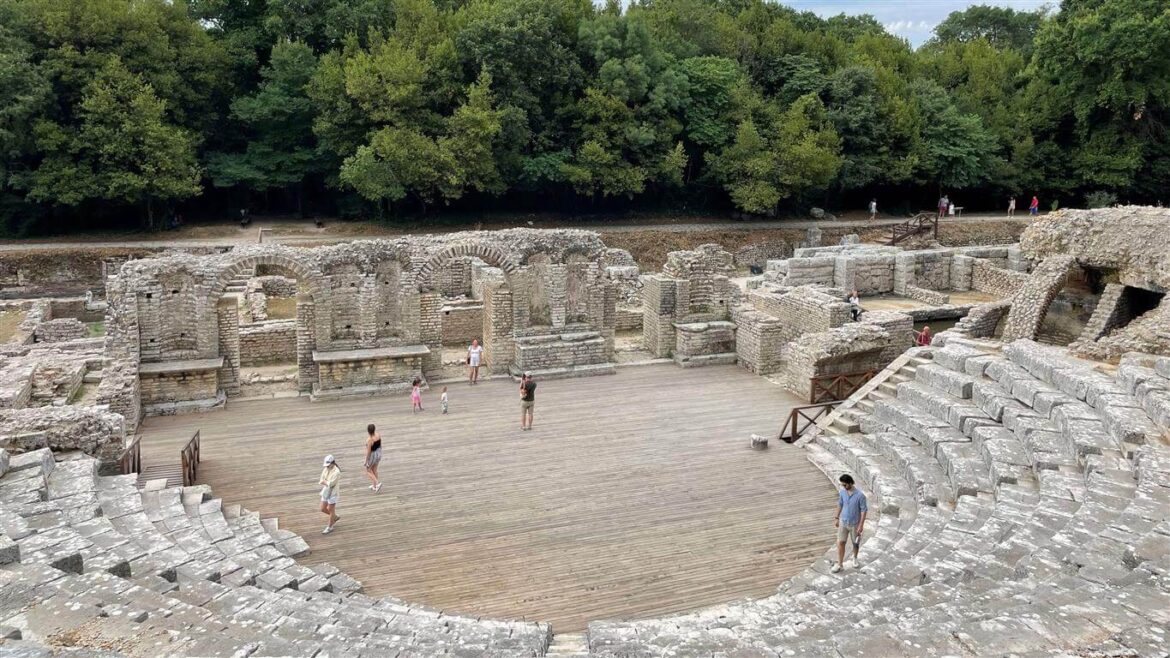
Later, during Roman times, performances and plays would have taken place at the theatre for the locals.
Today, it remains largely complete with the semi-circular seating looking down on the main stage. You can enter the theatre and take your seat to get a true impression of how it would be like to watch a show here.
The Great Basilica
The Basilica is an impressive structure built during the 6th century. It is a large building with many of its arches still intact on both sides.
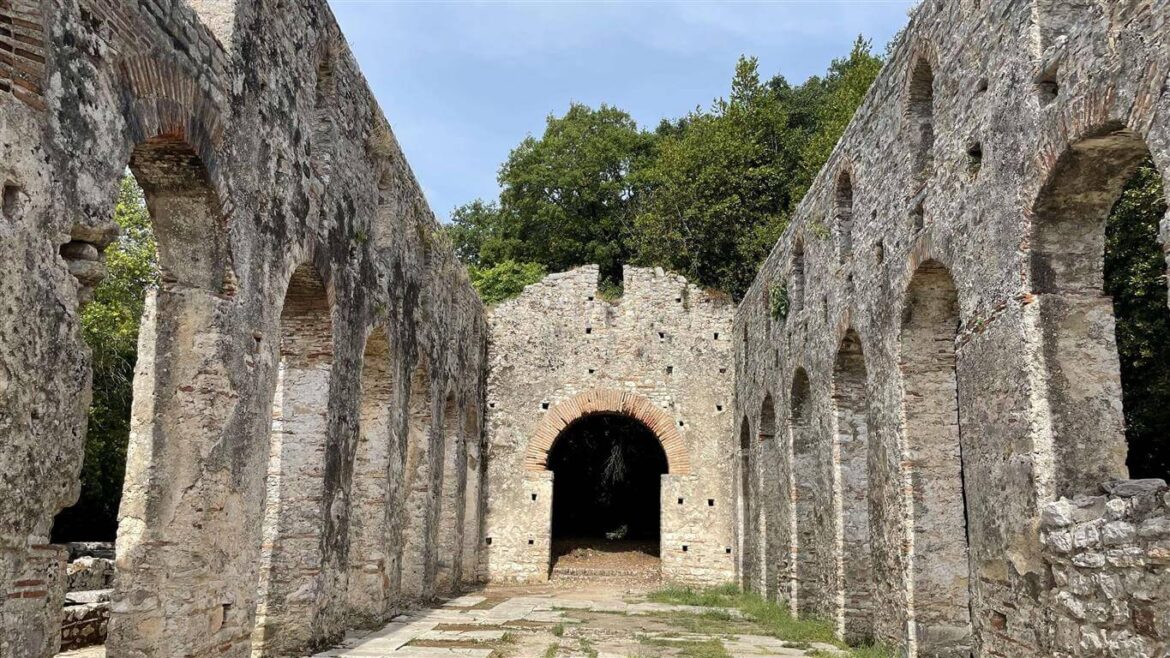
You can enter the Basilica to get an idea of the scale of this building. Apparently the church continued to operate into the 18th century!
The Lion Gate
The Lion Gate is one of the more popular attractions at Butrint National Park.
The gate is called Lion Gate thanks to the stone above the gate showing a lion devouring the head of a bull. Apparently, the stone with the lion is not original. It was in fact added to the gate during Roman times to make the height of the gate lower and easier to defend.
The Venetian Castle
After the Romans came the Venetians who purchased Butrint together with Corfu in 1387.
The Venetian Castle was built in order to protect the area and town of Butrint.
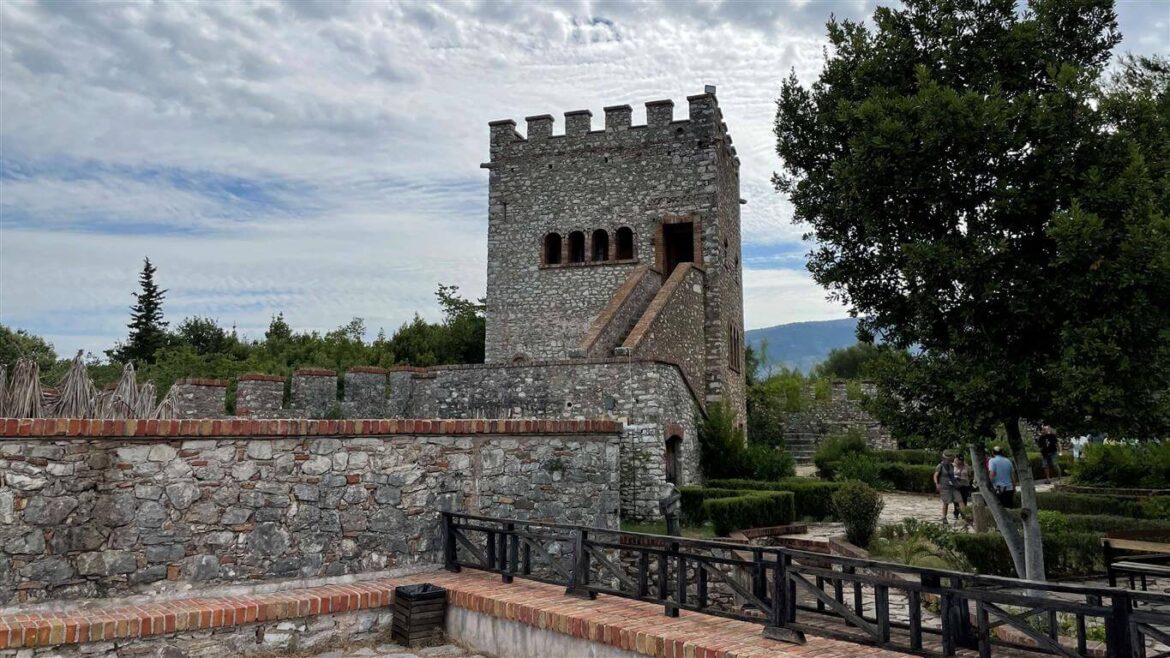
Today, you can climb the tower of the Castle for some great views over Butrint and the lake beyond.
Below the castle you can head into the archaeological museum to check out some of other discoveries made in Butrint during the excavations.
The Archaeological Museum
Inside and below the Venetian Castle is the archaeological museum. Your ticket to the Park will also include entry to the museum.
It is a small museum with lots of interesting artefacts discovered during the excavations so far. These range from coins and pots to huge marble sculptures.
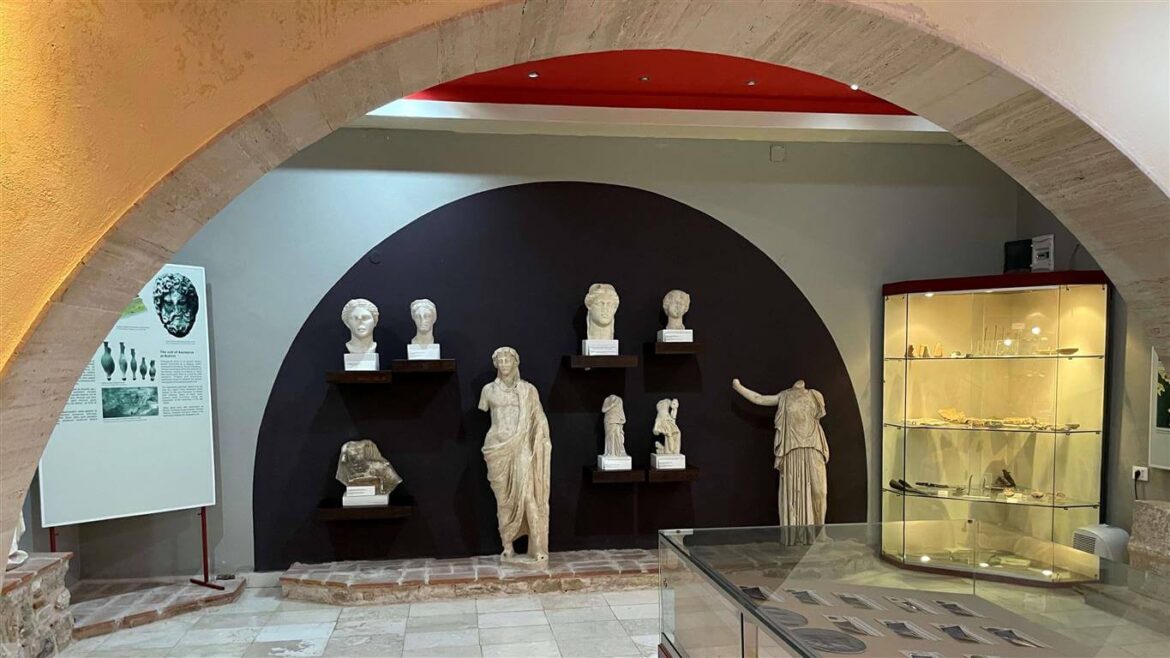
It’s an interesting visit and helps to give a good overview of the different settlers at Butrint and how the ancient city grew over the years.
The Venetian Triangular Castle
You will see the Venetian Triangular Castle as you head towards Butrint. It is in fact located outside of the main town of Butrint and across the Vivari Channel.
The castle was constructed to protect the fish traps of Butrint which were important to the economic survival of Butrint during Venetian times.
You can get a good view of it from the Castle and Tower within Butrint itself.
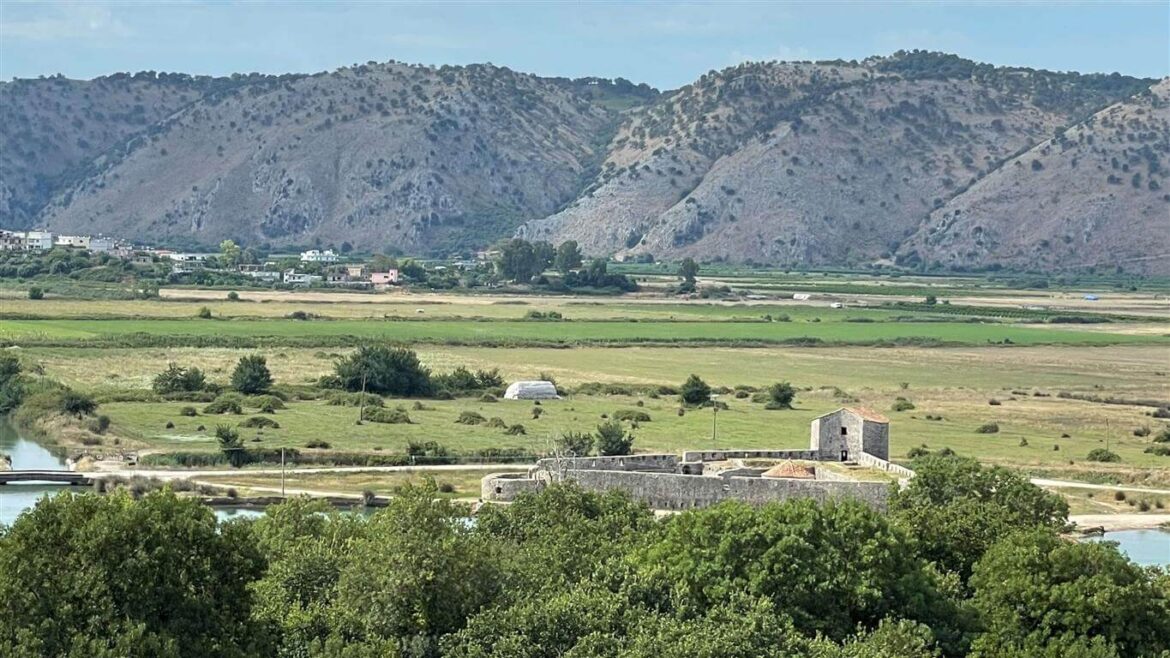
If you want to take a trip over to see the Venetian Triangle Castle then there is a separate ferry to cross the short stretch of water separating this castle from the mainland.
Equally there are fishermen near the entrance that will take you over on their boats for a small fee.
Other discoveries within Butrint National Park
As well as the above, there is a lot more to discover within Butrint that gives an insight into life in this town.
These include the Fountain of the Nymphs, the Tower and Water Gate, the Baptistery, a Roman Civic House and much more. It will give you a real feel for the size and scale of this once bustling town.
The Rest of Butrint National Park
The remains of the town of Butrint is only a small part of the National Park.
Surrounding Butrint National Park is 95 square kilometres of lakes, wetlands, forests and indigenous species to be discovered.
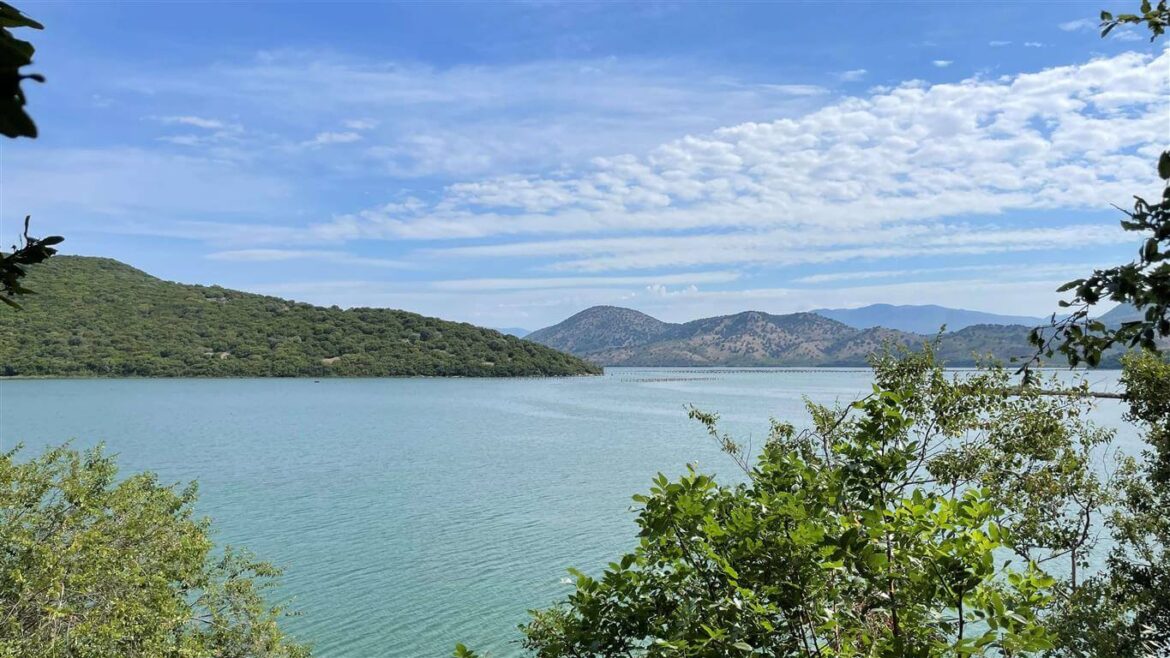
If you love exploring the great outdoors then ask at the reception area for a map of the park. You will find hiking and mountain biking trails throughout the area.
If you have the time, then head out to discover Ali Pasha’s Castle. This castle is often overlooked by tourists as it is not within the walls of Butrint itself. Instead, you will need to take a boat to get here which makes it a hidden gem within the park.
The castle was originally built by the Venetians. It was rebuilt and improved by the Ottoman ruler Ali Pasha of Tepelene in the early 1800s. Ali Pasha Tepelena was eventually declared a rebel and was killed in 1822 but the castle still bears his name today.
Entry to Butrint National Park
The ticket prices for entry to Butrint National Park as at 2022 are as follows.
individual visitors can buy a ticket for 1,000 lek (£7.50/$8.50) for the day. If you are a group of 12 or more, than group tickets are available at 800 lek (£6/$6.75) per person.
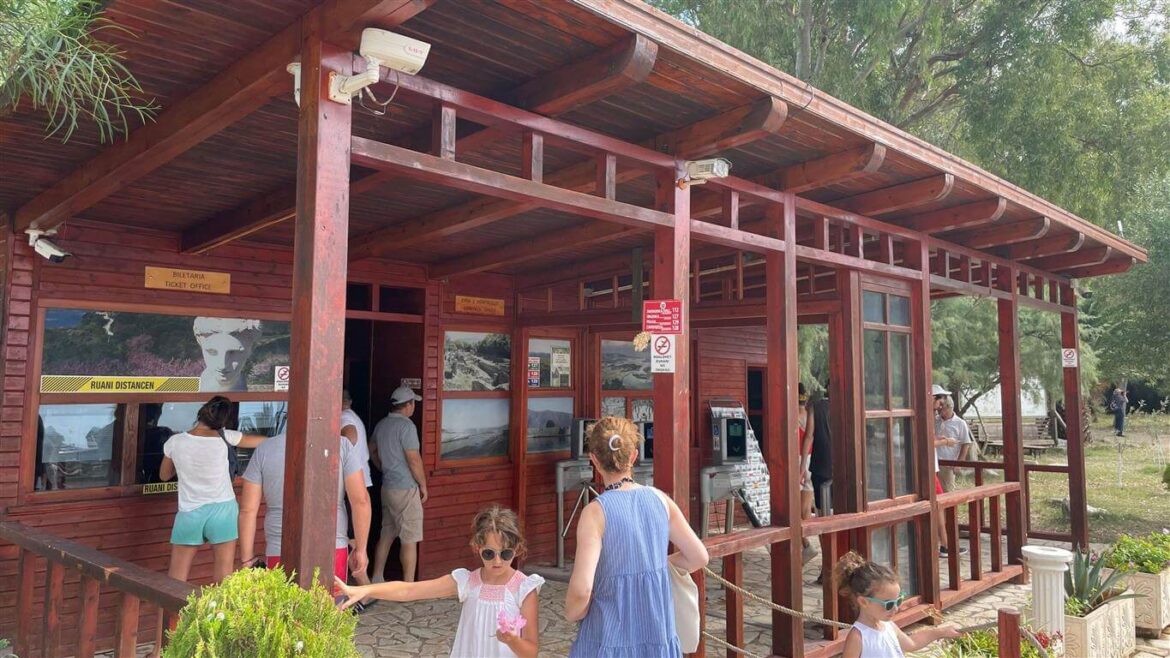
Children between the ages of 12-18 are 500 lek each (£3.75/$4.20) and children younger than 12 are allowed in free of charge.
Albanian students (300 lek) and retired Albanians (500 lek) can also claim reduced ticket prices.
The Butrint National Park opening hours are from 9am until 7pm, 7 days a week.
The Facilities at the Park
Inside the town of Butrint, you will find toilets as well as café and restaurant if you wish to take a break.
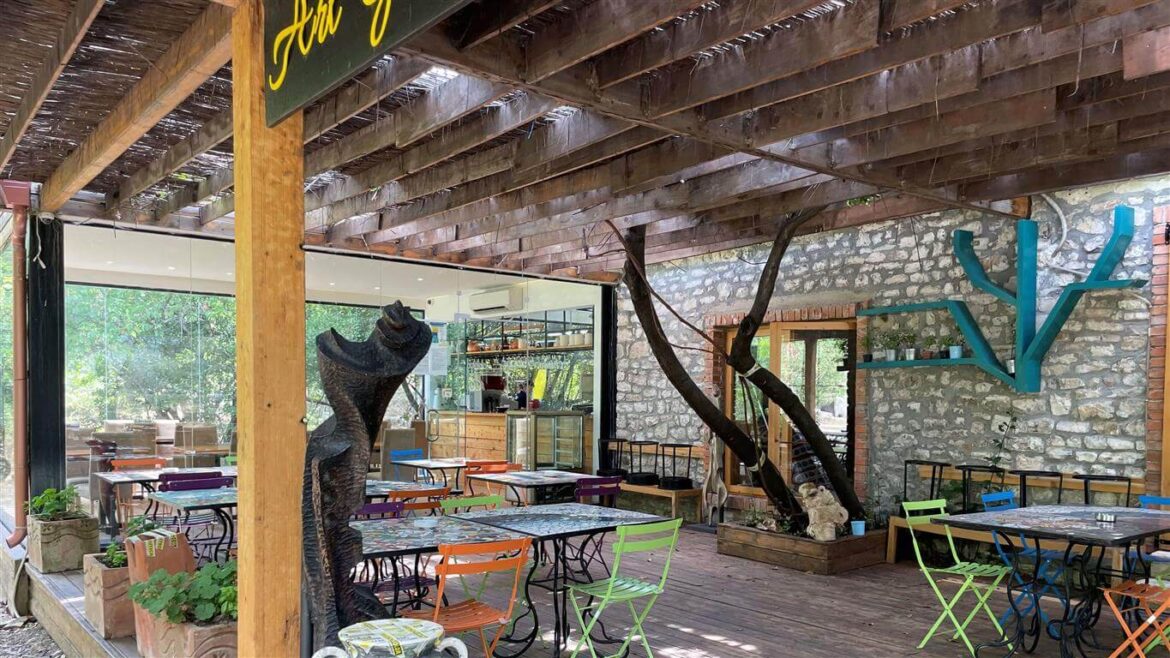
The route through the town is clearly shown and has information boards at each of the main discoveries. There are sign posts throughout the town and the trail is gentle and well maintained.
There are also opportunities to buy souvenirs within Butrint itself.
Outside of Butrint, you will find the Butrint ferry which will take you over he water to the Venetian Triangular Castle. In the summer months you will also find fishermen offering to take you across or further afield to Ali Pasha’s Castle. There is no fee to enter these two sites but they are only accessible by water.
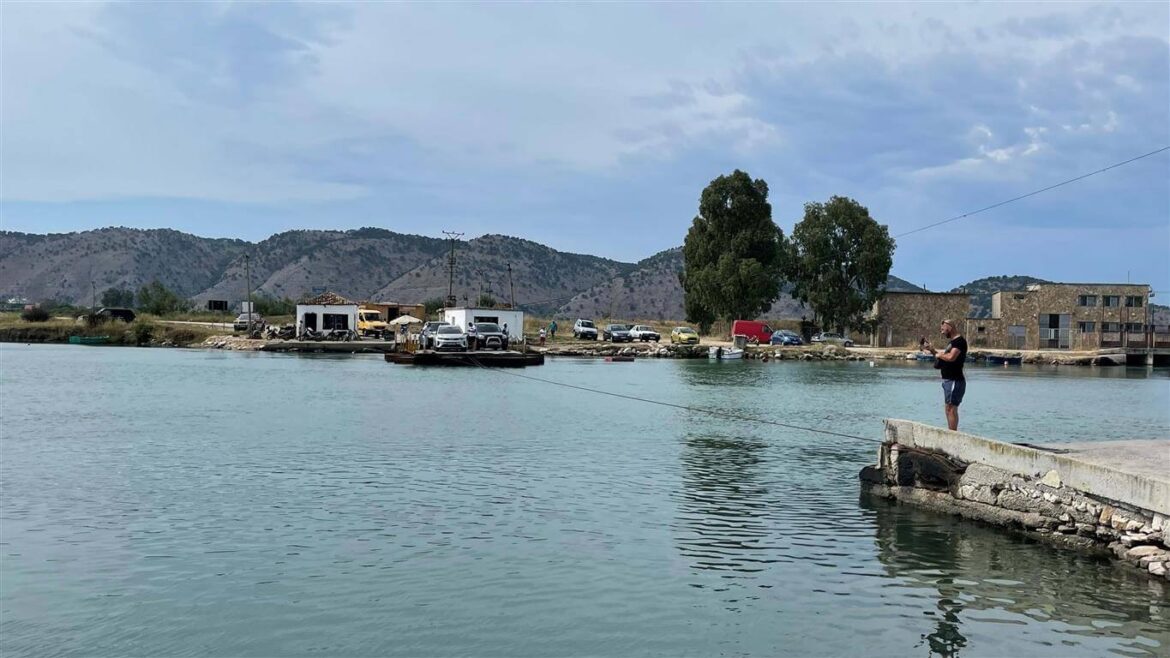
Just before you reach the main car park and entrance to Butrint there is a hotel and restaurant called Hotel Livia. We didn’t stay here but it appears to be a well regarded hotel and is perfectly located next to the park.
There is plenty of parking at Butrint National Park. The main parking is opposite the entrance to Butrint and next to the ferry. Here, operators will charge you to park in the summer months.
When we visited, we parked in the car park opposite Hotel Livia, which is a 2 minute walk from the entrance. We parked for free here as there were no operators.
Getting to Butrint National Park
Butrint National Park is around 18 kilometres south of Sarande. It is possible to reach the park by either car, public transport or on a tour.
By Car
Visiting Butrint National Park by car is straightforward and a short 20-30 minute drive.
As I mention above, the main car park is opposite the entrance to Butrint here. It is relatively cheap to park your car here but if you prefer, the car park opposite Hotel Livia is often free.
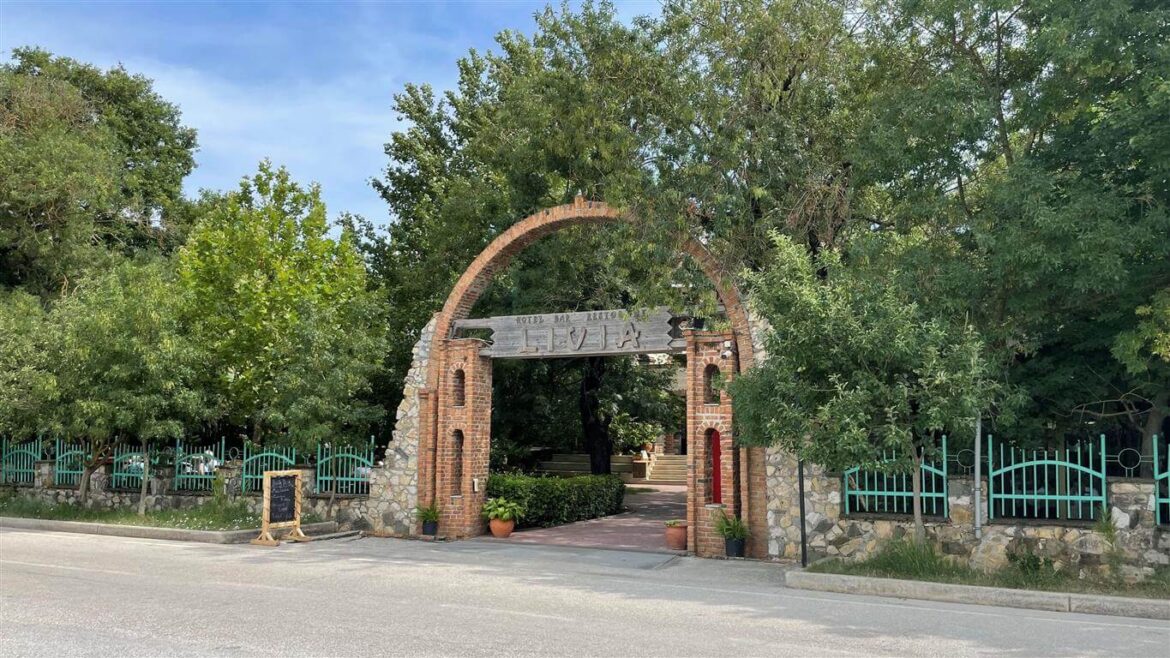
By Public Transport
There are public buses from Saranda to Butrint National Park which also pass through Ksamil.
The buses depart from Sarande ferry port every hour and it takes around 30 minutes to get to Butrint. The bus will drop you off near Hotel Livia, at the car park mentioned above. Tickets are around 150 lek (£1/$1.25).
The route, times and drop offs are set out in more detail on Visit Saranda.
From Corfu
Yes, it is possible to take a trip over the water to explore Butrint National Park from Corfu!
The ferry from Corfu port to Sarande takes around 30 minutes if you take one of the fast ferries. These run throughout the day from around 9am. Remember that Corfu is an hour behind Albania. So if you leave at 9am in Corfu you will actually arrive at 8.30am Sarande time!
The ferry arrives at the port which is where the bus to Butrint departs. The bus is around 30 minutes. So, allowing for a bit of waiting time, you can leave Corfu around 9am and arrive at Butrint at around 9.30am (local time).
Exploring Butrint will take around 2-3 hours and you can catch the same bus back to Sarande. Explore the town a little and grab a ferry back across the water to Corfu. They run until around 6.30pm each evening.
Take a look at Direct Ferries for precise timings and prices for your preferred date of travel.
Taking a Tour
There are some great tour options for visiting Butrint wherever you are in Albania.
If you are in Sarande and you want to take a tour to Butrint with a guide, then check out this great option. It includes transfers from Sarande as well as a 2-3 hour guided tour of the town.
If you want to combine a day trip with some of the other incredible things to do in the area, including the Blue Eye, then consider this day trip. Again, pick up is in Sarande. You will visit Butrint, the Blue Eye in Albania and Lekuresi Castle on a private tour.
If you’re based in Tirana and you want to tick off all of the attractions in this part of Albania in one day then consider this 15 hour tour. It takes in Butrint, the Blue Eye in Albania, the incredible city of Gjirokaster as well as several other stops before returning you to the capital.
Best time to visit Butrint National Park
If you are heading to Butrint National Park I would definitely recommend heading earlier in the day.
We arrived at around 9am when Butrint opened and there were a few people there but it was not crowded.
We stayed for around 3 hours and when we left there were larger coach tours that had arrived. The site is probably large enough that it wouldn’t have mattered if there were a few tours. However, if you can get there earlier and beat the crowds then you can head around at your own pace.
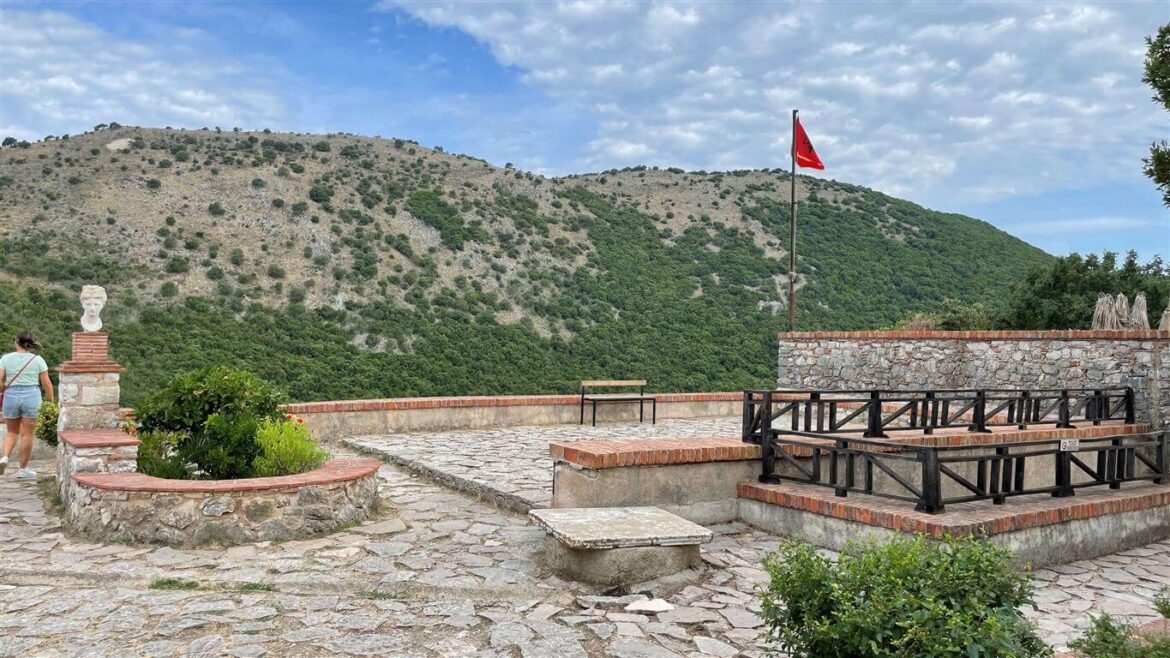
Equally, if you arrive later in the afternoon, you will again likely avoid the larger crowds and make the most of your time there.
FAQs
Ready to Explore?
Butrint National Park is a great half day trip from Sarande and Ksamil and gives you a great insight into the history of the area.
If you like Roman and Venetian history then you will find this place fascinating. There are many significant links to important players from the time, including Caesar himself.
If you are not into history, it is still an interesting place to explore and imagine how this lavish town once looked. There are also some great views over the lake Butrint and towards Corfu and some beautiful countryside to be explored.
It is a fantastic day out and one not to be missed if you are in South Albania. If you are heading to the capital city during your break, be sure to check out my blog posts about my favourite Bars in Tirana and Restaurants in Tirana.
If you want to know any more information then just leave me a comment or get in touch on social media and I would be happy to help!
Disclaimer: My blog contains affiliate links. If you buy something through these, I get a small commission at no additional cost to you. Thank you x

